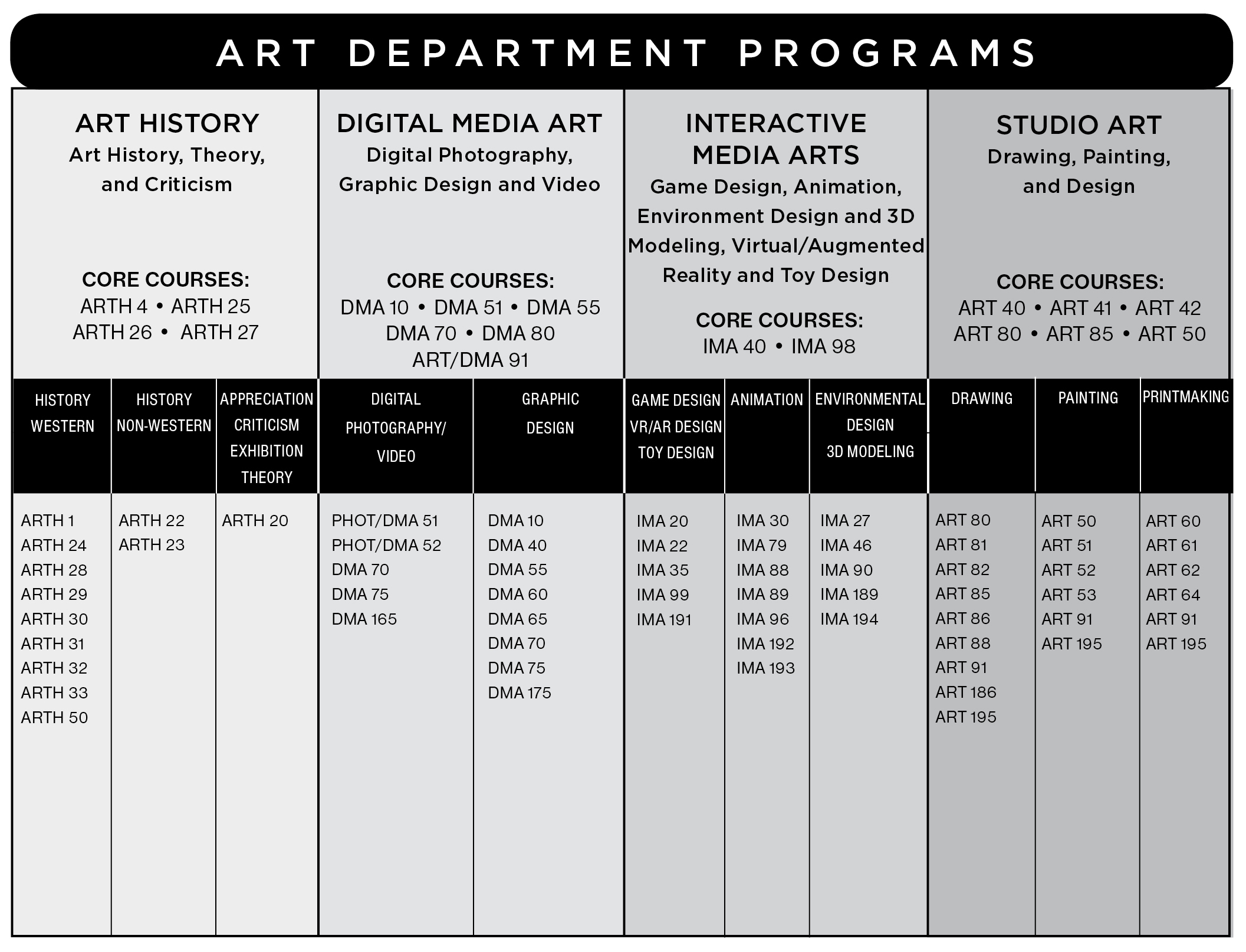2022-2023 Catalog: September 2022 Edition [ARCHIVED]
Art
|
|
 Return to: Program, Degree and Certificate List Return to: Program, Degree and Certificate List
Dean: Joseph Poshek
Academic Chair, Visual Arts: Terry Chatkupt
Faculty: Joseph Gerges; Julie Kirk
Courses
The curriculum includes courses in two- and three-dimensional design, drawing, painting, and art history. All courses are designed to develop students’ understanding and appreciation of the artist’s technical and aesthetic concerns. Studio courses teach students both to expand their basic design, drawing and painting skills and to become more visually aware of their world. These courses are designed for artists of all backgrounds and levels of technical ability. The curriculum in art history focuses on both the art of various world cultures and the critical theory necessary to understand visual culture within the contemporary context of analysis and criticism. Many courses offered in the art curriculum meet general education requirements in fine arts. In addition, they may be taken to satisfy the requirements for the Associate in Arts degree with a major in art.
Major
Students majoring in art at the lower-division level concentrate on learning the basic theoretical concepts, techniques, skills, and materials of drawing, painting, or watercolor. By learning these basics in a step-by-step process, students develop a better understanding of their powers of observation and self-expression. Students may prepare to transfer into an upper-division program in two-dimensional art. Those anticipating careers in graphic arts, drawing, painting, photography, and advertising will find the major especially helpful. The Arts faculty recommends that the art major not choose an art course to fulfill the general education requirement in Fine Arts and Languages, but explore one of the other arts, such as music, writing, theatre arts, or photography.
Program Student Learning Outcomes
Upon completion of the studio art program, students will be able to
- Demonstrate artistic and creative growth as a studio artist.
- Demonstrate a basic knowledge of fundamental design, drawing and painting techniques.
- Gain an increased aesthetic awareness and understanding of how to analyze their own and peer artwork from a critical point of view.
Potential Careers
Examples of careers in art include the following:
- Art Educator
- Commercial Artist
- Gallery and Museum Careers
- Professional Art and Design
- Technical Illustrator

ProgramsAssociate in ArtsAssociate in Arts for Transfer
 Return to: Program, Degree and Certificate List Return to: Program, Degree and Certificate List
|